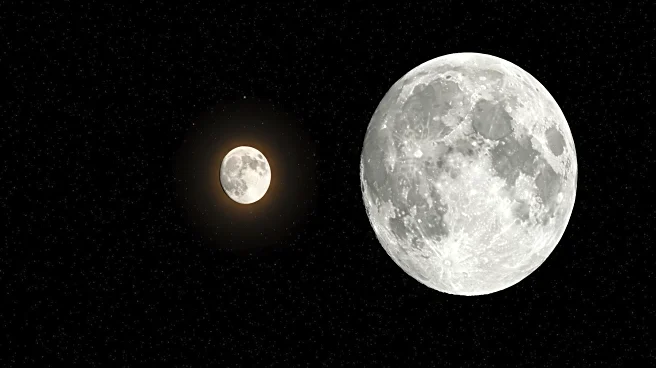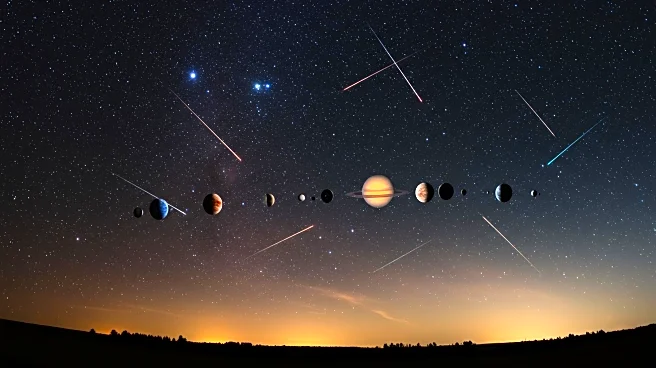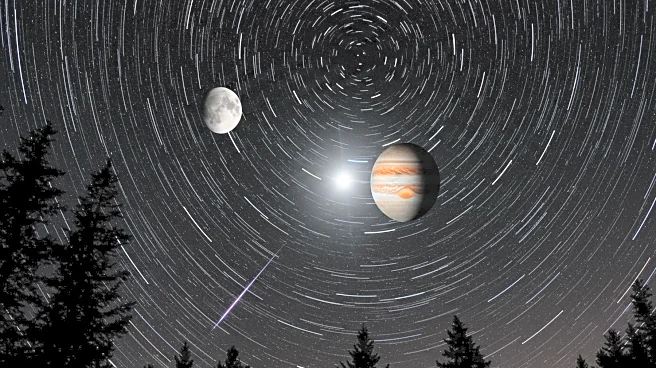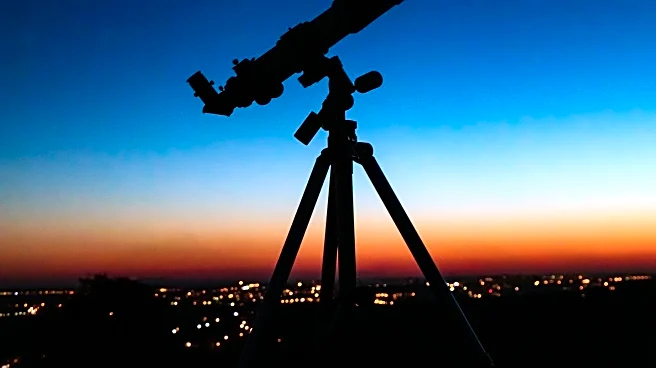What's Happening?
On August 14, 2025, Mercury will become visible in the early morning sky, positioned 3° above the eastern horizon an hour before sunrise. This celestial event occurs in the constellation Cancer, near Gemini, which also hosts Venus and Jupiter. The Moon will reach perigee at 1:59 P.M. EDT, being 229,456 miles from Earth. Mercury, with a magnitude of 1, can be located by tracing a line from the brighter Venus and Jupiter towards the horizon. This visibility marks Mercury's emergence from the Sun's glare, presenting a challenging target for observation.
Why It's Important?
The visibility of Mercury offers astronomers and enthusiasts a rare opportunity to observe the planet, which is often obscured by the Sun's brightness. The Moon's perigee, being the closest point in its orbit to Earth, can affect tidal patterns and is significant for those studying lunar cycles. These events contribute to the understanding of planetary movements and their impact on Earth, providing valuable data for scientific research and public interest in astronomy.
What's Next?
Observers can use binoculars or telescopes to enhance their view of Mercury, which appears 24 percent lit through a telescope. The alignment of Venus and Jupiter serves as a guide for locating Mercury, encouraging amateur astronomers to engage in skywatching activities. The Moon's perigee may lead to increased tidal activity, which could be monitored by scientists studying oceanic and environmental changes.











